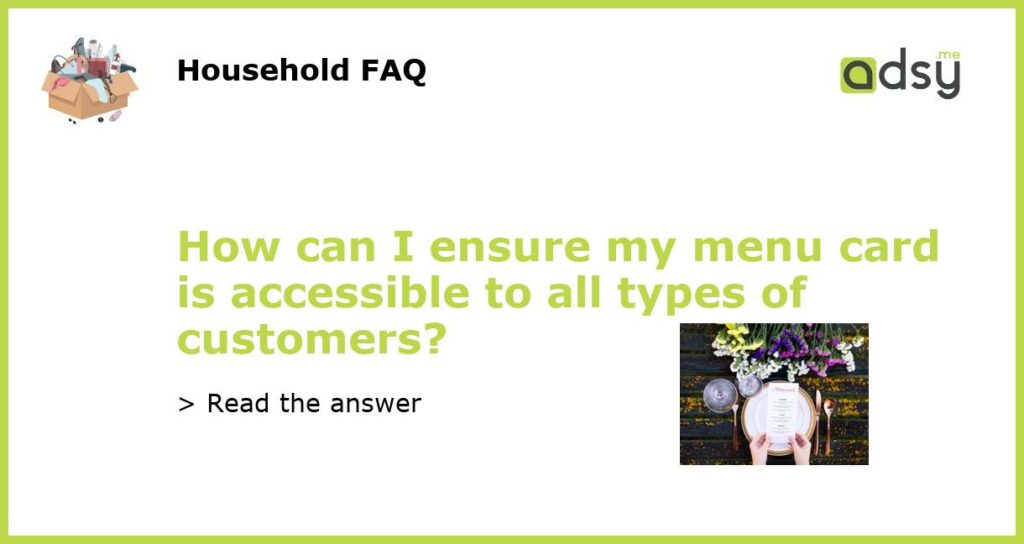Understanding the Importance of Menu Accessibility
When it comes to restaurant dining, customers expect to be able to easily access and understand your menu. However, for some people with disabilities or sensory impairments, this experience can be challenging. As a responsible business owner, it’s important to ensure that your menu is accessible to all types of customers. Not only is this a legal requirement, but it’s also a way to show that you value and prioritize the needs of all guests.
Consider Your Layout and Design
When designing your menu, consider the layout and design with accessibility in mind. Keep the font size large enough for those with visual impairments and use a high- contrast color scheme. You may also consider providing menus in braille for individuals who are blind or visually impaired. If your menu is available online, make sure it is compatible with screen readers and has alt text descriptions for images.
Provide Clear and Concise Descriptions
To ensure that your menu is accessible to all customers, provide clear and concise descriptions of menu items. Include information about allergens, dietary restrictions, and food preparation. This will help customers make informed decisions about what to order and avoid any potential health risks. Use simple language and avoid using jargon or fancy words that may be difficult for some guests to understand.
Create a Welcoming Atmosphere
Aside from designing an accessible menu, it’s also important to create a welcoming atmosphere that promotes inclusivity. Train your staff on how to interact with guests with disabilities and provide them with the resources and tools they need to accommodate their needs. Encourage your staff to be patient and respectful and be prepared to make adaptations or modifications to your menu when necessary.
Partner With Accessibility Organizations
If you’re looking to take your accessibility efforts to the next level, consider partnering with accessibility organizations or advocacy groups in your community. These organizations can provide guidance and support on accessibility best practices and may even offer training to your staff. Additionally, partnering with these organizations can help demonstrate your commitment to accessibility and inclusive practices in your business.






